If you’re a PC gamer, you will know about the Razer DeathAdder. It’s an iconic gaming mouse that has been used by some of the pro gaming scene’s most prolific players, and it’s still the product most people think of when they think ‘Razer’.
As such, it isn’t a big surprise that Razer has decided to give its classic model the 2022 Pro refresh. Something that does come as a bit of a surprise is the way they went about it: Razer not only gave the internals a (big) upgrade, they also made changes to the shape.
So what we have here is a brand new shape in an ultralight (63 grams) design, complete with the Focus Pro 30K optical sensor, Razer’s third generation optical mouse switches, and of course Razer’s HyperSpeed Wireless technology. Is this the ultimate large ergonomic mouse for competitive gamers? Find out in our Razer DeathAdder V3 Pro review!
At A Glance
Razer Deathadder V3 Pro
Used by 135 players ()The DeathAdder V3 Pro is aimed squarely at competitive and professional gamers who desire performance above all else, and it hits the mark on all fronts.
Pros
- Great build quality
- Flawless wireless connection
- Great battery life (90 hours)
- Capable of 4KHz polling rate in wireless mode (with separate dongle)
- Gen 3 optical switches feel great
Cons
- Price is high
- Side buttons have too much post travel
- Shape change might not sit well with everyone
- 4KHz polling rate not achievable out of the box (you need a separate dongle)
Specs
| Sensor | Focus Pro 30K |
|---|---|
| Polling Rate | 125 / 500 / 1000 / 4000 Hz |
| Button Switches | Razer Optical |
| Button Force | 81g |
| Connection | Wireless |
| Shape | Ergonomic |
| Length | 12.95cm |
| Height | 4.21cm |
| Weight | 63g |
| Width | 6.13cm |
Usage Over Time In The Pro Scene
First Impressions
Discaimer: the DeathAdder V3 Pro is compatible with Razer’s HyperPolling 4KHz dongle (sold separately) for a wireless polling rate of 4000Hz. I haven’t been able to test this, so this compatibility/feature will not be part of the review. Note that using the mouse with a 4KHz polling rate will lower the battery life to ~24 ingame hours.
As impressive as the changes under the hood are, I was personally more curious about the change in shape, and that’s something that immediately catches the eye. Gone are the signature deep comfort grooves on the buttons, for example. This new DeathAdder looks and feels very different from its predecessor, so if you were expecting minimal changes you better adjust those expectations, as this is definitely a rather big change. I will talk about the shape further down in the review but I wanted to touch on it since this is of course one of the first things one notices about this new mouse.
Another noteworthy change can be seen on the sides of the mouse: Razer has ditched the integrated side grips and went for custom-cut side grips that you can apply yourself, much like with the Viper V2 Pro.
In true ‘Pro refresh’ style, the weight has also been reduced dramatically. Having cut over 20 grams, the V3 Pro feels as if it’s from a different world if you compare it to the V2 Pro, even if you leave the obvious shape changes aside for a moment.
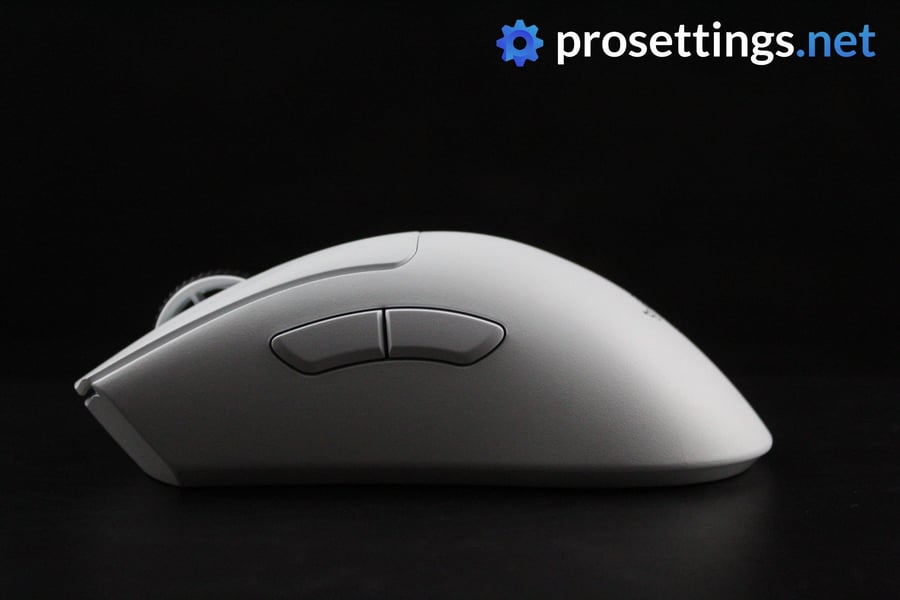
Speaking of changes: one last exterior change that’s immediately noticeable to DeathAdder connoisseurs has been made to the buttons. These are now separate from the shell instead of integrated, which should help improve the click feeling.
Before closing off this first impressions section and getting on with the review, I want to touch on the price really quickly, as this is something that has been brought up by a lot of people in the community as soon as the mouse was unveiled. The comments regarding price also have to do with the fact that Razer is cutting some ‘QoL features’ (the dock compatibility, the opportunity to store the receiver in the mouse itself) on the V3 Pro versions.
At an MSRP of 149 dollars, this is quite obviously priced at the very top end of the spectrum, but it’s important to consider that, for pro and competitive players in today’s market, things like a lower weight are much more important than the capability to charge the mouse via a dock, for example. I’ve made this comparison before, but what Razer is offering here can be compared to a stripped down sports car that’s made with performance in mind. It won’t be as comfortable and luxurious as a decked out limousine that can be had for around the same price, but it’s not meant to be that, and that metaphorical comfy limousine sure won’t be as fast around the track as the sports car. Different options for different people.
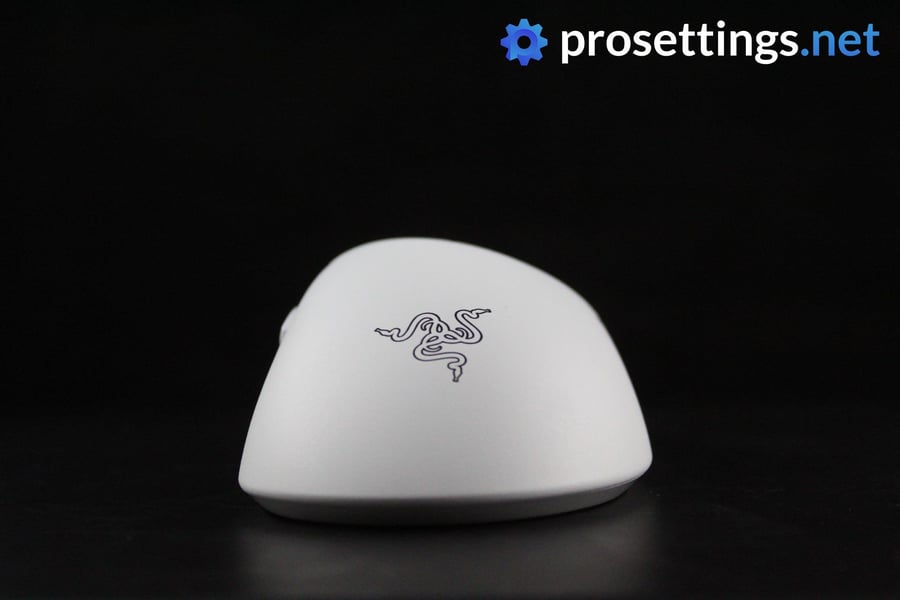
By saying that I do not mean that I completely agree with all of Razer’s decisions. For example, I think having a place to store the dongle on the mouse itself is incredibly handy on these esports-focused mice, since those users are going to be traveling a lot more than the average ‘casual gamer,’ so removing that is something I’m not particularly happy with. I just want to say that, even though the price is high (it’s also important to consider that the market is happily paying these prices, otherwise they would be lowered) it’s handy to consider the differences between esports-focused mice and more casual, luxurious mice. They serve different purposes and different audiences.
With that out of the way, let’s get on with the actual Razer DeathAdder V3 Pro review.
Packaging
Inside the box you will find the mouse itself, a SpeedFlex charging cable, the USB receiver, a dongle that allows you to place the receiver closer to your mouse, the usual documentation, and a package of pre-cut custom grips for your mouse if you decide that you want a bit of extra grip.
It’s a bit disappointing that there are no replacement mouse feet in the packaging. The feet are something that competitive gamers do care about so it’s always nice to be able to replace a pair of worn out gliders should the need arise. You can obviously still do so (I suspect aftermarket skates will be available from plenty of manufacturers) but you would need to order them separately, and at this price point they should be included if you ask me.
Shape, Coating, and Mouse Feet
Razer has made a lot of adjustments to their beloved DeathAdder over the years, but this shape tuneup has to be one of the most dramatic changes in recent history. Whereas the DeathAdders of the past couple of years were rather unique in their design with the front flare, pronounced comfort grooves, and long, flat hand feeling, this V3 Pro makes the DeathAdder more in line with the EC-style shapes of this world. Given the fact that plenty of people will be wondering, I will outline the biggest changes between the V2 and the V3 to give you an idea of what the switch is like.
On the V3, the thumb indentation on the left side of the shell is less pronounced, the flare on the front of the mouse (giving the V2 and its predecessors that almost trademark ‘trapezoid shape’ at the front) has been dramatically reduced, the hump sits a little higher (as does the scroll wheel and the side buttons), and the V3 also feels more slanted due to the fact that the highest point of the hump has been moved towards the left, whereas it was slightly more centralized on earlier versions.
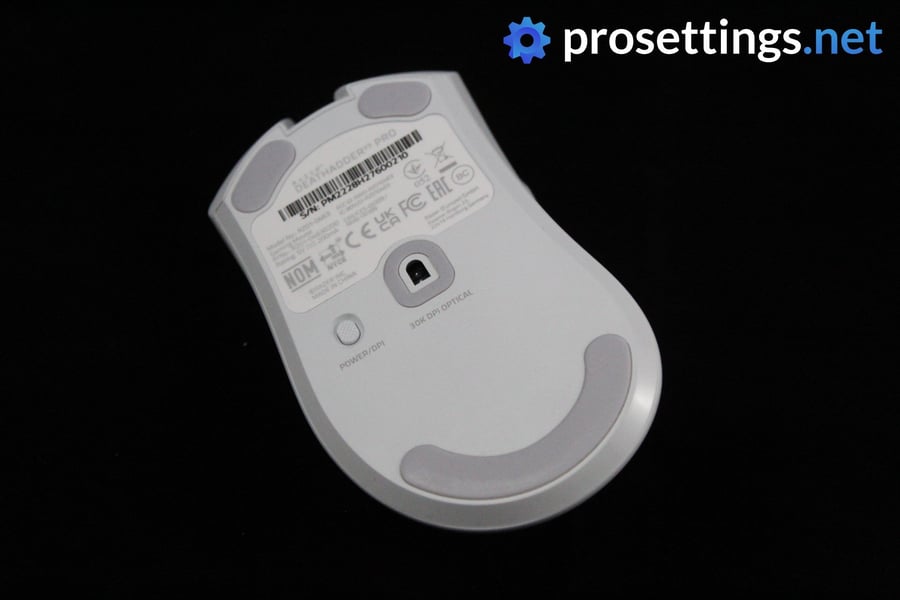
All of this leads to a design that feels safer than what its predecessors offered because of the fact that it’s less ‘locked in’, but if you happened to love that flat and long hand sensation that earlier versions gave you it would be wise to try this one out at a physical store first since the new design is boxier and feels very different in the hands. This is also much more of a tilt-gripping mouse, whereas earlier versions were flatter. Whether or not these changes are an upgrade to you personally will of course depend on your preferences, but I hope I managed to explain the differences well enough.
For me personally, this new shape fits me a lot better, though it isn’t perfect. I would have liked the thumb indentation to be a bit deeper. I currently find myself putting a lot of pressure on my thumb in high stress scenarios because it almost naturally wants to get deeper into the shell (I have 18×10.5 cm hands and use a claw-dominant grip these days, for reference) but of course that’s something personal. Overall I would prefer the V3’s shape over the earlier DeathAdders, since I personally lean more towards tilted ergonomic mice these days.
The coating on recent Razer mice has always felt amazing to me, and that hasn’t changed with the V3 Pro. This matte coating is ever so slightly texturized, giving it a grippy feeling under all circumstances. It also handles sweat and finger oils like a champ. Absolutely no complaints on this front: Razer is at the top of the coating me as far as I’m concerned.
Speaking of grip and texture: the DeathAdder V3 Pro no longer has rubberized sides. I have always been a fan of those in the past (and still am on certain shapes and mice) but oddly enough I agree with their removal here. This new shape lends itself to on the fly grip adjustments much more, and having a sticky material on the sides could interfere with that. For people who do want that sticky experience, Razer has included grip tapes. These are thin (meaning that the shape won’t change if you apply them) and high quality, and I had no issues reapplying them multiple times over. They do of course use an adhesive so you won’t be able to reuse them endlessly, but they’re definitely good to use multiple times over without issue.
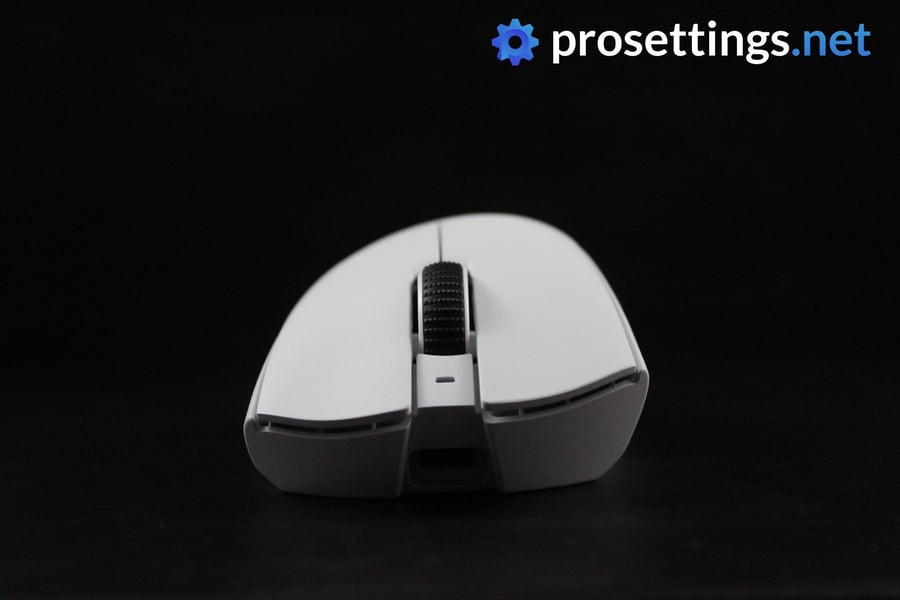
On the bottom we find the familiar DeathAdder V2 pattern of PTFE skates (though these skates aren’t 1:1 to the ones found on the DA V2 Pro) and these glide fantastically. They’re smooth and nicely rounded, and I had no issues using them on a variety of pads. I personally don’t see any reason to replace these for aftermarket skates.
The side buttons are now thinner and placed higher on the shell, so they fall out of that ‘just roll your thumb slightly to reach them’ realm. For me that’s not an issue as I don’t use the ‘roll method’ on my side buttons, but depending on your playing style this might be something to take note of. Both buttons are easy to distinguish in the heat of the action, and moving them higher up makes for more grip options so I’m all for it.
Recommended Grip Types
I see the DeathAdder (and especially this newer one) as a claw and palm grip mouse for people with medium to large hands. With these shape changes you can get by with smaller hands, but due to the size of the mouse it might become unwieldy for making smaller adjustments. Fingertip grippers can glance at this one a little longer as the separated buttons mean that it lends itself to that style of grip a little bit more, but there are a ton of other options out there that I would recommend before trying out the DeathAdder if you’re using a fingertip grip, with Razer’s own Viper line as an example.
Do take note of the fact that this is just an approximation. I have no way of knowing your personal preferences, so these grip/size guides in reviews should always be taken exactly as what they are: guidelines, not gospel.
Buttons and Scroll Wheel
Razer has continuously been improving their Optical Switches, and now that they’re on the third generation I find it pretty difficult to feel a large difference between these and standard mechanical mouse switches like Omrons. The Optical switches aren’t as crispy or tactile as Kailh 8.0 switches (which seem to have become the industry standard in recent months) so for switch purists these might not be it, but they are absolutely fine to use for the vast majority of gamers, myself included.
Compared to the DeathAdder V2 Pro these clicks feel and sound a lot crispier, so it’s apparent that Razer hasn’t stopped improving on their switches. For anyone wondering: optical switches offer a number of advantages over traditional mechanical switches. They are faster to actuate, there’s no risk of accidental double clicking (something that has plagued mice with mechanical switches in the past) and they last almost twice as long as the average traditional switch. With the click feeling and sound being on point in these Gen-3 switches I would personally pick these over common mechanical switches because of the aforementioned advantages.
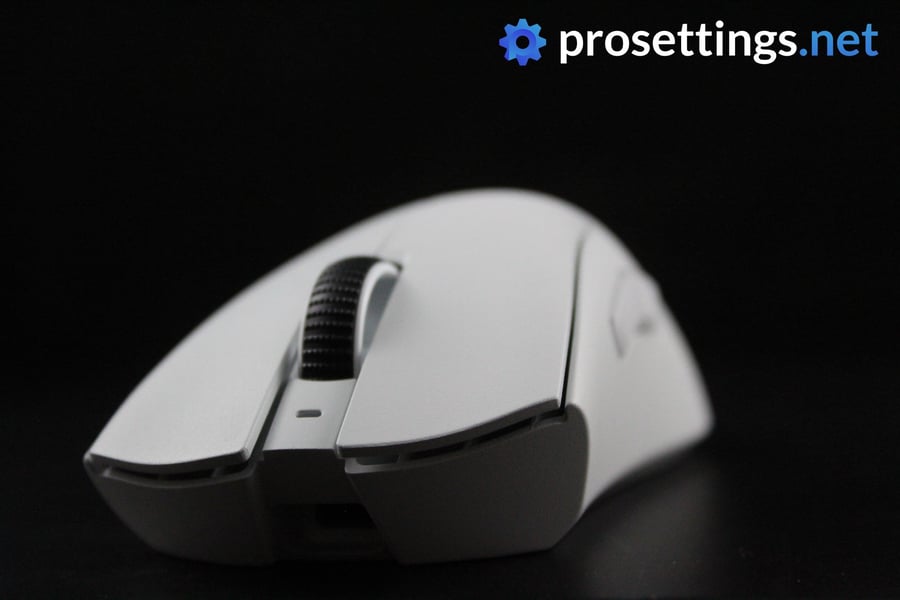
The main buttons are now separate from the shell, leading to a slightly more responsive and consistent click feeling, and that click feeling is amazing. Both main buttons have almost no pre travel and a very minimal amount of post travel that only gets noticed if you put a lot of pressure on the button. There’s no side movement at all on my copy, making for one of the best and most consistent feeling click sets I’ve used in a while.
The side buttons also actuate with a pleasing sensation but they do suffer from the ‘pivot problem’, where they travel inside the shell if you press them near the edge of the button. Particulary mouse 4 suffers from this, and given the fact that I press it near its edge with the way I’m gripping the mouse this is somewhat of an annoyance to me. I don’t currently use my side buttons for bindings that need continuous use (like push to talk, for example) so it’s not a big problem, but if you do then this could get on your nerves.
The scroll wheel (which now sits higher) is almost completely quiet and has just the right amount of definition in between steps. Contrary to what I experienced on the V2 Pro, this one offers a bit more feedback when pressed. This means I didn’t have any accidental scrolls when using it ingame. In short: this is a pretty great scroll wheel.
Build Quality and Cable
The DeathAdder V3 Pro is a solid piece of equipment. Shaking or tapping it revealed no noises, and I couldn’t get it to bend or squeak when applying pressure all over the mouse. It’s very impressive to me how Razer has managed to make such a strong mouse at such a light weight. Ultralight mice have a tendency to feel a bit flimsy at times due to their weight and the shell construction designs that are necessary to achieve that weight, but I didn’t get that feeling here at all. This is one of the more premium feeling mice I’ve tested in a while.
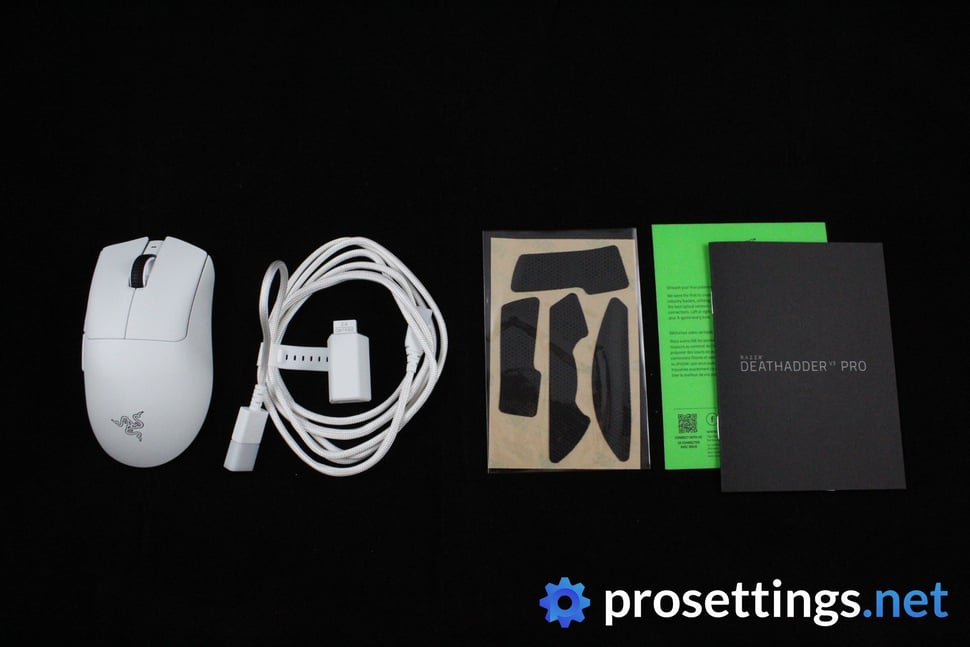
The DeathAdder V3 Pro has a battery life of around 90 ingame hours, which should be enough for even the most hardcore gamers, but if the need arises to charge it while gaming you can plug in the included SpeedFlex cable. This USB-C cable is thin, flexible, and doesn’t demand any attention when using it so that you can use the mouse in its wired configuration without distractions. Should you forget your cable at a LAN event or what have you, you can also use any old USB-C cable, as long as the end connector isn’t too thick. I tested it with a variety of third party cables and they all fit, which is great to know.
Sensor and Everyday Performance
Sensors in reputable gaming mice have been flawless for years now, but that doesn’t mean that there aren’t any advancements to be made. The Razer Focus Pro 30K (which was co-developed with Pixart) now has better power efficiency, improved surface compatibility, and is able to track on glass flawlessly as long as it’s at least 4mm thick. The max DPI goes all the way to 30000 now and the maximum speed and acceleration that the sensor can handle have also been increased when compared to the Focus+.
Of course these aren’t changes that the average gamer will notice, but I always applaud it when companies push the boundaries of technology, so long as that doesn’t get in the way of the overall usability of the product, and this Focus Pro 30K sensor is exactly that. It pushes the boundary and creates new standards.
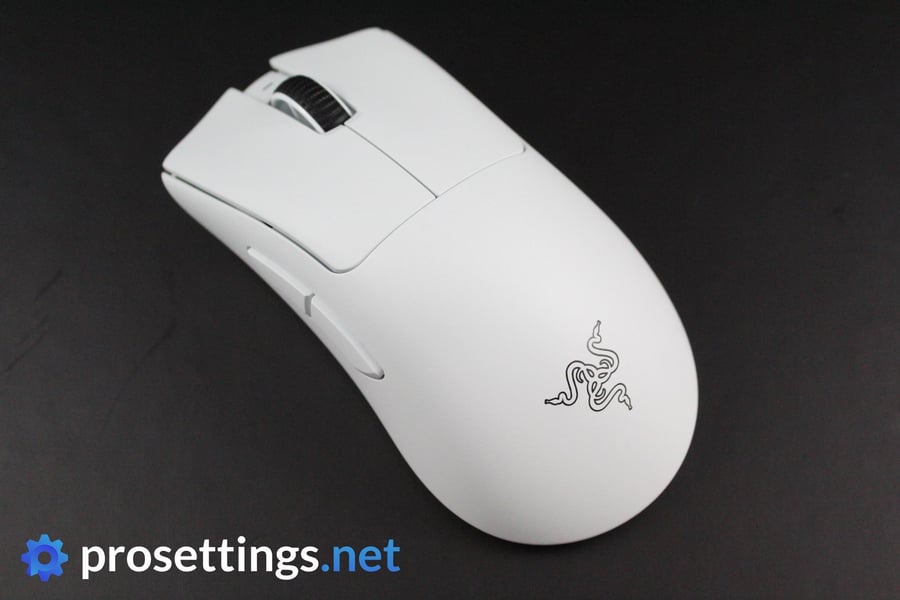
As with all of Razer’s products, you can download their Synapse software to configure your mouse, but with the on-board DPI button (which doubles as the power button when long pressed) you can also use this in a plug-and-play fashion. As stated earlier on, this mouse is capable of 4000Hz polling rate in wireless mode, though you will need to purchase a separate receiver for that. I did not get that receiver for testing, so I can’t comment on that, but this is yet another example of Razer pushing the boundaries of what’s possible, even if the launch of the HyperPolling dongle has been somewhat rocky due to unforeseen demand levels.
One small note is that there is no more Bluetooth compatibility. This makes sense to me, as Bluetooth isn’t good enough to use for gaming at all (due to latency and stability concerns) so for me this omission is not an issue whatsoever.
Razer DeathAdder V3 Pro Review – Conclusion
I expected to be very impressed with the DeathAdder V3 Pro, so I subconsciously set a really high standard for this mouse, and even then it has managed to exceed my expectations. If you are a competitive player who wants to get the latest and greatest tech bundled in a wireless ergonomic package then this is it, provided the shape works for you of course. That shape is boxier and more tilted than what was found on the DeathAdder V2, but I would encourage you to read the ‘shape’ section for a more detailed breakdown.
The DeathAdder V3 Pro is very lightweight, yet it’s built like a tank. It has optical switches that offer all of the advantages of said optical switches, yet feel like common mechanical switches. It houses what’s probably the best sensor on the market right now and sports an impressive battery life of 90 ingame hours and it can go all the way up to a polling rate of 4000Hz, though you need to buy a separate dongle for that. There’s a lot of impressive tech inside this mouse, and while not all of that new tech will be felt (the DeathAdder V2 Pro already had a flawless sensor, for example) ingame, it’s undeniable that Razer are pushing the envelope.
The only ‘glaring’ issue I could find here was the fact that the side buttons have too much post travel when pressed near their edges, but aside from that this is a stellar release with pretty much no objective downsides. Of course there is the fact that the price is on the high side but I elaborated on my thoughts about that in the ‘First Impressions’ section in case you’re interested in this mouse and only reading the conclusion.
In short: this is one of the most impressive competitive gaming mice on the market right now, there’s no two ways about it. If you’re looking for a mouse with a lot of ‘comfort bells and whistles’ then this probably isn’t it though. The DeathAdder V3 Pro is aimed squarely at competitive and professional gamers who desire performance above all else, and it hits the mark on all fronts.
This product was received for free from the manufacturer and given to our reviewer to test and review. Brands and manufacturers have no editorial control over our reviews. For more information, check out our review FAQ.


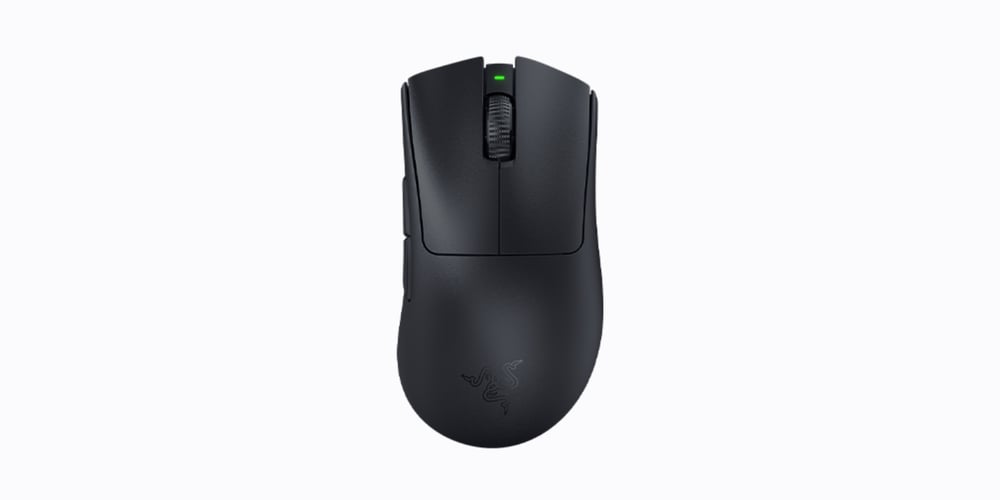





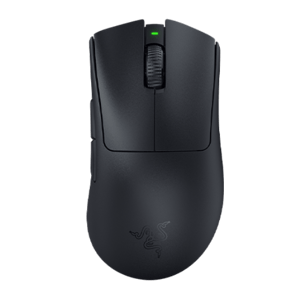


They also have a deathadder v3 wired which cost cheaper and perform exact same as the deathadder v3 pro
Yes, that’s definitely a great option for people who don’t need a wireless mouse. Thanks for the tip!
Thanks for this review. My handsize is the same and also my grip. What are your favourite shapes you perform the best with? And is there an upcoming review of the Vaxee XE?
It’s kind of varied for me, and it’s also quite difficult to answer since I use so many mice over the course of a year it’s hard to kind of ‘settle’ on one as my main (I really like to thoroughly test mice).
For games like CS:GO and VALORANT I like more ‘locked in’ ergonomic mice (I’ve used the Outset AX for a while, and now am experimenting with the ZOWIE EC3-C) generally, for more ‘active’ games like Overwatch and the likes where there’s lots of swiping going on I like something like the Viper Pro. What’s important for me is that I have a lot of ‘finger control’ in the sense that I prefer it when my button fingers are closer to the pad (or at least arched mostly downwards) these days, so a mouse with a very high button profile or a centralized hump rather than a hump that’s focused towards the back tends to not work very well for me personally.
In short, I would say that the Zowie EC2/EC3 shape is definitely one of my favorites, all things considered. A wireless version of that along with some of my personal preferences (Razer-style coating, quiet scroll wheel, medium glide smooth feet, around 70 grams, …) would probably be close to endgame at this point in time. I do have to say that I’ve been feeling pretty good using the Razer Viper V2 Pro as well, as that’s a rather low neutral shape that allows for a lot of ‘on the fly’ customization. So to answer your question right now I would say that I like the EC shape and the Viper/FK shapes the best right now.
The VAXEE XE review went live today! https://prosettings.net/review/vaxee-xe/